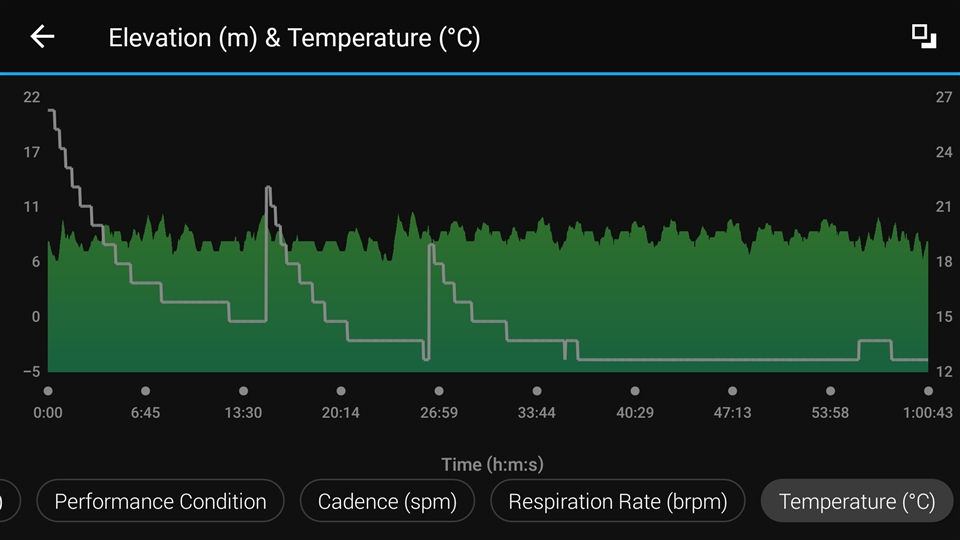I have noticed that a temperature change causes a significant elevation change. This is particularly impacting the following situations:
1. elevation 'calibrated not during activity': this is done during the sleep window of the user. I am wearing the watch during sleep, which means that the calibration is done with watch temperature of 35-40C. During the day, the watch temperature is lower and the elevation increases significantly (tens of meters).
2. elevation 'calibrated at start of activity': this is done when starting a run for example. I am starting my run straight after exiting my house. This means that the calibration is done with watch temperature higher then during the run (note: it is winter here in the netherlands). The elevation increases signfiicantly during the first few minutes of the run (tens of meters). Example of a run on a near typical dutch flat terrain with very little elevation change (local DEM = 8m):
To illustrate the effect more clearly, i compared two cases where the watch was put down stationary on an outside table during the whole activity.
A. the watch temeprature was still warm (coming from inside), but gradually stabilizes to outside temperature.
B. the watch temperature is already stabilized to outside temperature
Comparing case A and B, one can see that the initial temperature acclimatization causes an elevation away from the initially calibrated correct DEM height (8m). I don't like this behavior since it significantly affects the elevation plot during my activity. 'Dumber' watches (eg Forerunner 245 without barometer, DEM, ...) seem to do a better job at the elevation plot during activities. I would have expected that Fenix 6 Pro with DEM + GPS + barometer + temperature sensor + smart algorithms would be able to correct the temperature to elevation effect. I am hence wondering
- if the behavior is recognized by more people;
- if the behavior is a SW bug, HW malfunction or a inevitable feature of barometer elevation (if so, how can i turn if off!)
settings/context with which above data is obtained
- watch mode: 'barometer' (but behavior also observed in 'auto')
- calibration during activity: 'continous' (but also 'at start')
- calibration not during activity: 'on'
- SW 13,3 (but behavior still present with 15.20 beta)
- cleaned sensor port (as per manual with warm water)



